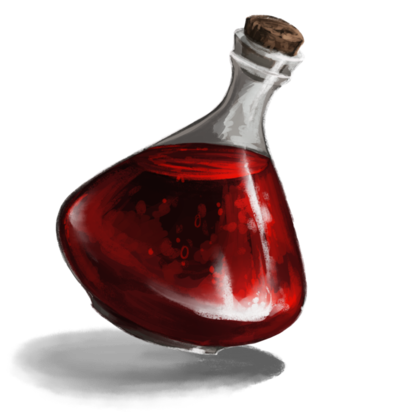Potions are a staple in every fantasy setting. Players can be found downing several at a time, magically stitching up their mortal wounds with magical shots so they can scrape by to take out the big boss. D&D is no different-- often potions of healing are the first things the party will seek out during a shopping trip. But potions cost gold. A lot of it. And that adds up over time. So it seems natural for some classes or characters to beg the question-- can I make my own potions? Today I'll be looking at the official takes for crafting potions and seeing what alternative methods the community has came up with.

Going By The Book
First we need to know what we're crafting. In the Dungeon Master’s Guide, The Player’s Handbook, and Xanathar’s Guide to Everything potions are classed as a magical item with the following properties:
You regain 2d4+2 Hit Points when you drink this potion. Whatever its potency, the potion’s red liquid glimmers when agitated.
By rules as written, to craft a potion of healing a character must have:
- Access to Cure Wounds
- The knowledge to craft a potion, such as through purchasing a formula
- 50gp worth of materials
- 2 days of down time
It is uncommon for a party to have the time dedicated to crafting. After all who wants to roleplay two days of waiting for one potion for the sake of some gold? By design the crafting method is clunky, possibly to keep the party's funds at a reasonable level and to ensure the barbarian isn't carrying 20 healing potions at one time instead of the healing classes, well, healing.
Introducing Potion Crafting into Your Game
In some cases you may want to take a homebrewed approach. Perhaps your party has no healing classes, or one of them is a doctor or witch looking to lean into that role. There are numerous resources and guides out there, and below is a selection of my reccomendations!
Potion Brewing and Ingredient Gathering by Lyydia
This comment has been removed by the author.
ReplyDeleteVery interesting read with a great layout.
ReplyDelete